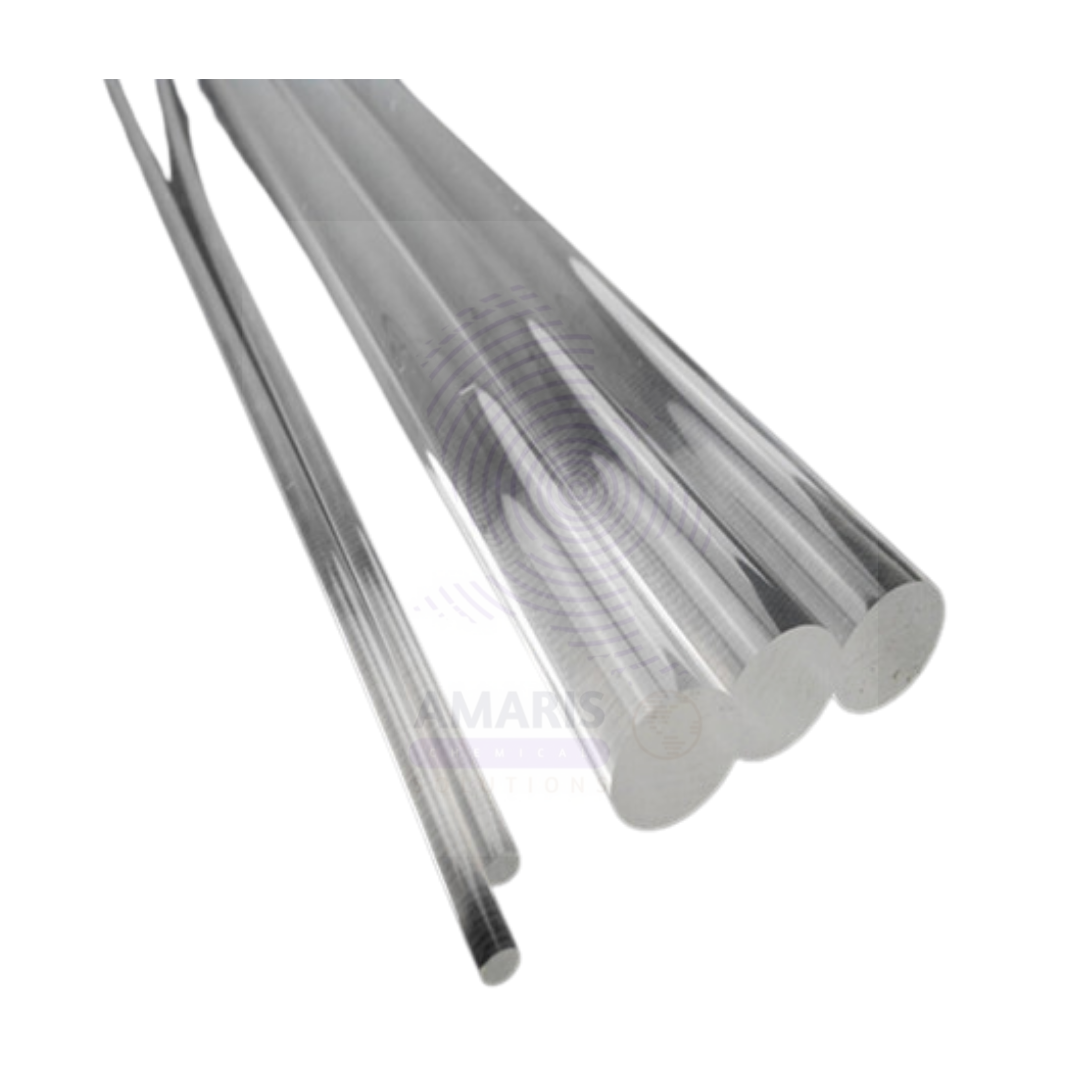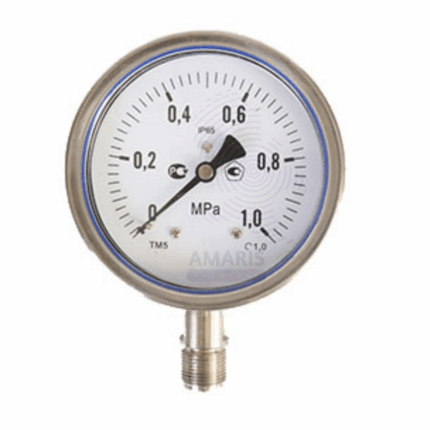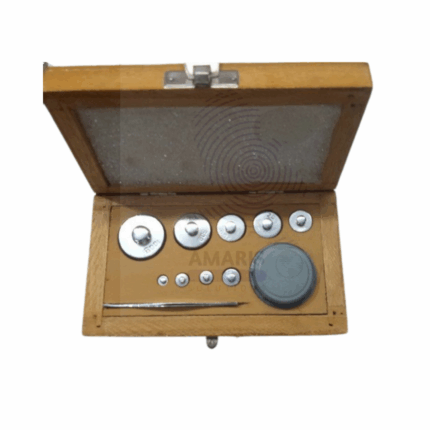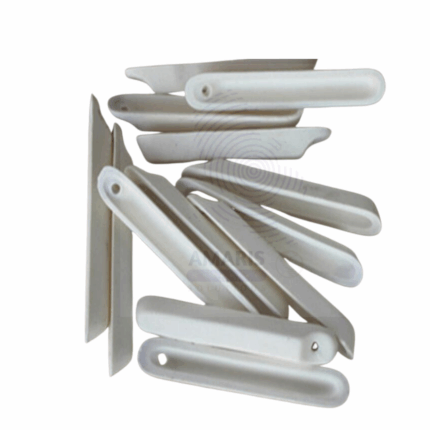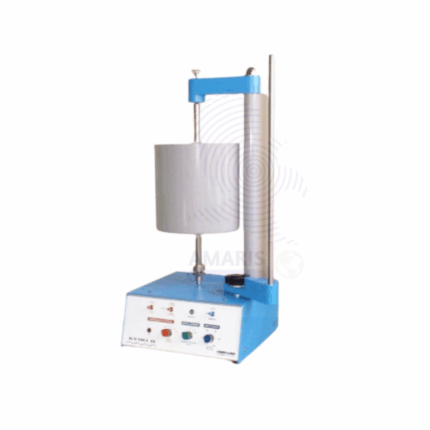
PERSPEX ROD
Product Description
A Perspex Rod is a solid cylindrical rod made from Perspex (also known as acrylic or polymethyl methacrylate, PMMA), a transparent thermoplastic material widely used in laboratories, industrial applications, and educational demonstrations. Perspex rods are prized for their clarity, strength, and ease of machining, making them ideal for experiments requiring optical transparency or lightweight, durable components. They
Primary Uses
Laboratory and Educational Applications
- Demonstrating optical phenomena such as refraction and light transmission.
- Construction of laboratory apparatus requiring transparent, durable rods.
- Teaching static electricity experiments due to Perspex’s ability to hold charge.
- Supporting or mounting components in experimental setups.
Secondary Uses
Industrial and Research Applications
- Used in prototype models and design mock-ups.
- Employed in light-guiding applications and signage.
Perspex Rod
Product Description
A Perspex Rod is a solid cylindrical rod made from Perspex (also known as acrylic or polymethyl methacrylate, PMMA), a transparent thermoplastic material widely used in laboratories, industrial applications, and educational demonstrations. Perspex rods are prized for their clarity, strength, and ease of machining, making them ideal for experiments requiring optical transparency or lightweight, durable components. They are often utilized in physics experiments to demonstrate properties such as refraction, light transmission, and static electricity, as well as in construction of apparatus or models requiring rigid, clear components.
Uses
Primary Uses
Laboratory and Educational Applications
- Demonstrating optical phenomena such as refraction and light transmission.
- Construction of laboratory apparatus requiring transparent, durable rods.
- Teaching static electricity experiments due to Perspex’s ability to hold charge.
- Supporting or mounting components in experimental setups.
Secondary Uses
Industrial and Research Applications
- Used in prototype models and design mock-ups.
- Employed in light-guiding applications and signage.
Key Attributes
Basic Identification Attributes
- Material: Polymethyl methacrylate (PMMA) – Perspex.
- Shape: Cylindrical rod, available in various diameters and lengths.
- Color: Transparent, with high optical clarity.
- Surface: Smooth and polished finish.
Physical & Chemical Properties
- Transparency: High optical clarity, comparable to glass but lighter.
- Density: Approximately 1.18 g/cm³, lighter than glass.
- Mechanical Strength: Good impact resistance but can scratch more easily than glass.
- Chemical Resistance: Resistant to many acids and alkalis but sensitive to some solvents (e.g., acetone).
Safety & Hazard Attributes
- Can crack or shatter under high stress; handle with care.
- Avoid exposure to solvents that may cause crazing or damage.
Storage & Handling Attributes
- Store in a cool, dry place away from direct sunlight to prevent UV degradation.
- Handle with gloves to avoid fingerprints and surface damage.
- Avoid contact with solvents and abrasive materials.
Regulatory & Compliance Attributes
- Manufactured to comply with laboratory equipment and material safety standards.
Environmental & Health Impact
- Perspex is recyclable under specific industrial processes.
- Non-toxic under normal handling conditions.
Perspex Rod
Product Description
A Perspex Rod is a solid cylindrical rod made from Perspex (also known as acrylic or polymethyl methacrylate, PMMA), a transparent thermoplastic material widely used in laboratories, industrial applications, and educational demonstrations. Perspex rods are prized for their clarity, strength, and ease of machining, making them ideal for experiments requiring optical transparency or lightweight, durable components. They are often utilized in physics experiments to demonstrate properties such as refraction, light transmission, and static electricity, as well as in construction of apparatus or models requiring rigid, clear components.
Uses
Primary Uses
Laboratory and Educational Applications
- Demonstrating optical phenomena such as refraction and light transmission.
- Construction of laboratory apparatus requiring transparent, durable rods.
- Teaching static electricity experiments due to Perspex’s ability to hold charge.
- Supporting or mounting components in experimental setups.
Secondary Uses
Industrial and Research Applications
- Used in prototype models and design mock-ups.
- Employed in light-guiding applications and signage.
Key Attributes
Basic Identification Attributes
- Material: Polymethyl methacrylate (PMMA) – Perspex.
- Shape: Cylindrical rod, available in various diameters and lengths.
- Color: Transparent, with high optical clarity.
- Surface: Smooth and polished finish.
Physical & Chemical Properties
- Transparency: High optical clarity, comparable to glass but lighter.
- Density: Approximately 1.18 g/cm³, lighter than glass.
- Mechanical Strength: Good impact resistance but can scratch more easily than glass.
- Chemical Resistance: Resistant to many acids and alkalis but sensitive to some solvents (e.g., acetone).
Safety & Hazard Attributes
- Can crack or shatter under high stress; handle with care.
- Avoid exposure to solvents that may cause crazing or damage.
Storage & Handling Attributes
- Store in a cool, dry place away from direct sunlight to prevent UV degradation.
- Handle with gloves to avoid fingerprints and surface damage.
- Avoid contact with solvents and abrasive materials.
Regulatory & Compliance Attributes
- Manufactured to comply with laboratory equipment and material safety standards.
Environmental & Health Impact
- Perspex is recyclable under specific industrial processes.
- Non-toxic under normal handling conditions.


 Preservatives(food)
Preservatives(food) Flavor Enhancers
Flavor Enhancers Acidulants
Acidulants Sweeteners
Sweeteners Antioxidants
Antioxidants Colorants(food)
Colorants(food) Nutraceutical Ingredients (food)
Nutraceutical Ingredients (food) Nutrient Supplements
Nutrient Supplements Emulsifiers
Emulsifiers
 Collectors
Collectors Dust Suppressants
Dust Suppressants Explosives and Blasting Agents
Explosives and Blasting Agents Flocculants and Coagulants
Flocculants and Coagulants Frothers
Frothers Leaching Agents
Leaching Agents pH Modifiers
pH Modifiers Precious Metal Extraction Agents
Precious Metal Extraction Agents
 Antioxidants(plastic)
Antioxidants(plastic) Colorants (Pigments, Dyes)
Colorants (Pigments, Dyes) Fillers and Reinforcements
Fillers and Reinforcements Flame Retardants
Flame Retardants Monomers
Monomers Plasticizers
Plasticizers Polymerization Initiators
Polymerization Initiators Stabilizers (UV, Heat)
Stabilizers (UV, Heat)
 Antifoaming Agents
Antifoaming Agents Chelating Agents
Chelating Agents Coagulants and Flocculants
Coagulants and Flocculants Corrosion Inhibitors
Corrosion Inhibitors Disinfectants and Biocides
Disinfectants and Biocides Oxidizing Agents
Oxidizing Agents pH Adjusters
pH Adjusters Scale Inhibitors( water)
Scale Inhibitors( water)
 Antioxidants(cosmetic)
Antioxidants(cosmetic) Emollients
Emollients Fragrances and Essential Oils
Fragrances and Essential Oils Humectants
Humectants Preservatives
Preservatives Surfactants(cosmetic)
Surfactants(cosmetic) Thickeners
Thickeners UV Filters
UV Filters
 Fertilizers
Fertilizers Soil Conditioners
Soil Conditioners Plant Growth Regulators
Plant Growth Regulators Animal Feed Additives
Animal Feed Additives Biostimulants
Biostimulants Pesticides (Herbicides, Insecticides, Fungicides)
Pesticides (Herbicides, Insecticides, Fungicides)
 Active Pharmaceutical Ingredients (APIs)
Active Pharmaceutical Ingredients (APIs) Excipients
Excipients Solvents(pharmaceutical)
Solvents(pharmaceutical) Antibiotics
Antibiotics Antiseptics and Disinfectants
Antiseptics and Disinfectants Vaccine Adjuvants
Vaccine Adjuvants Nutraceutical Ingredients (pharmaceutical)
Nutraceutical Ingredients (pharmaceutical) Analgesics & Antipyretics
Analgesics & Antipyretics
 Analytical Reagents
Analytical Reagents Solvents(lab)
Solvents(lab) Chromatography Chemicals
Chromatography Chemicals Spectroscopy Reagents
Spectroscopy Reagents microbiology-and-cell-culture-reagents
microbiology-and-cell-culture-reagents Molecular Biology Reagents
Molecular Biology Reagents Biochemical Reagents
Biochemical Reagents Inorganic and Organic Standards
Inorganic and Organic Standards Laboratory Safety Chemicals
Laboratory Safety Chemicals Specialty Laboratory Chemicals(Special Laboratory Equipment)
Specialty Laboratory Chemicals(Special Laboratory Equipment)
 Demulsifiers
Demulsifiers Hydraulic Fracturing Fluids
Hydraulic Fracturing Fluids Scale Inhibitors(oil)
Scale Inhibitors(oil) Surfactants(oil)
Surfactants(oil) Drilling Fluids
Drilling Fluids
 Dyes and Pigments
Dyes and Pigments Bleaching Agents
Bleaching Agents Softening Agents
Softening Agents Finishing Agents
Finishing Agents Antistatic Agents
Antistatic Agents
 Admixtures
Admixtures Waterproofing Agents
Waterproofing Agents Sealants and Adhesives
Sealants and Adhesives Curing Compounds
Curing Compounds Concrete Repair Chemicals
Concrete Repair Chemicals Anti-Corrosion Coatings
Anti-Corrosion Coatings
 Surfactants(cleaning)
Surfactants(cleaning) Builders
Builders Enzymes
Enzymes Solvents (Cleaning)
Solvents (Cleaning) Fragrances
Fragrances
 Electronic Chemicals
Electronic Chemicals Catalysts
Catalysts Lubricants
Lubricants Photographic Chemicals
Photographic Chemicals Refrigerants
Refrigerants Automotive chemicals
Automotive chemicals Pyrotechnic Chemicals
Pyrotechnic Chemicals
 Biodegradable Surfactants
Biodegradable Surfactants Bio-based Solvents
Bio-based Solvents Renewable Polymers
Renewable Polymers Carbon Capture Chemicals
Carbon Capture Chemicals Wastewater Treatment Chemicals
Wastewater Treatment Chemicals
 Pigments
Pigments Solvents(paint)
Solvents(paint) Specialty Coatings
Specialty Coatings Binders/Resins
Binders/Resins Additives
Additives Driers
Driers Anti-Corrosion Agents
Anti-Corrosion Agents Functional Coatings
Functional Coatings Application-Specific Coatings
Application-Specific Coatings
 Fresh Herbs
Fresh Herbs Ground Spices
Ground Spices Whole Spices
Whole Spices Spice Blends
Spice Blends Dried Herbs
Dried Herbs
 Leavening Agents
Leavening Agents Dough Conditioners
Dough Conditioners Flour Treatments
Flour Treatments Fat Replacers
Fat Replacers Decoratives
Decoratives Preservatives(baking)
Preservatives(baking)
 Plasticizers & Softeners
Plasticizers & Softeners Reinforcing Agents
Reinforcing Agents Adhesion Promoters
Adhesion Promoters Vulcanizing Agents
Vulcanizing Agents Antidegradants
Antidegradants Blowing Agents
Blowing Agents Fillers & Extenders
Fillers & Extenders Accelerators & Retarders
Accelerators & Retarders